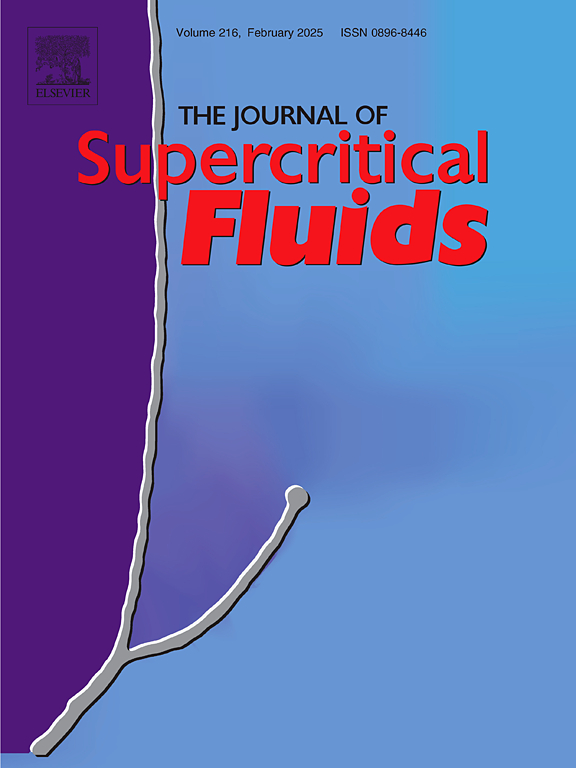TBABr-based deep eutectic mixtures as efficient catalytic medium for the cycloaddition reaction between CO2 and epoxides
IF 4.4
3区 工程技术
Q2 CHEMISTRY, PHYSICAL
引用次数: 0
Abstract
The production of cyclic carbonates from CO2 and epoxides is one of the most investigated strategies for the chemical utilization of CO2 as renewable carbon source. In this work different tetrabutylammonium bromide (TBABr)-based deep eutectic mixtures were prepared and tested as catalytic systems for the cycloaddition reaction between CO2 and propylene oxide. Best results were obtained for TBABr:Glycerol deep eutectic system. The operating conditions (reaction temperature, CO2 pressure and TBABr:Glycerol molar ratio) on propylene carbonate formation was studied. The catalytic activity of DES (TBABr: Gly (1:5)) was also tested for different epoxides resulting in the corresponding cyclic carbonates in good yields, the exceptions were cyclohexene oxide and limonene oxide, which are more difficult to activate owing to an increased steric hindrance. Finally, the reusability of the catalytic medium was investigated using supercritical CO2 extraction as a second step for product separation from the reaction mixture.
tbabr基深共晶混合物作为CO2与环氧化物环加成反应的高效催化介质
以二氧化碳和环氧化物为原料生产环状碳酸盐是目前研究最多的将二氧化碳作为可再生碳源的化学利用策略之一。本文制备了不同的四丁基溴化铵(TBABr)基深共晶混合物,并对其作为CO2和环氧丙烷环加成反应的催化体系进行了测试。结果表明,TBABr:Glycerol深共晶体系效果最好。研究了反应温度、CO2压力和TBABr:Glycerol摩尔比对碳酸丙烯酯生成的影响。DES (TBABr: Gly(1:5))对不同环氧化合物的催化活性也进行了测试,得到了相应的环状碳酸盐,产率很高,但环氧环己烯和环氧柠檬烯除外,它们由于位阻增加而更难以活化。最后,利用超临界CO2萃取作为第二步从反应混合物中分离产物,研究了催化介质的可重复使用性。
本文章由计算机程序翻译,如有差异,请以英文原文为准。
求助全文
约1分钟内获得全文
求助全文
来源期刊

Journal of Supercritical Fluids
工程技术-工程:化工
CiteScore
7.60
自引率
10.30%
发文量
236
审稿时长
56 days
期刊介绍:
The Journal of Supercritical Fluids is an international journal devoted to the fundamental and applied aspects of supercritical fluids and processes. Its aim is to provide a focused platform for academic and industrial researchers to report their findings and to have ready access to the advances in this rapidly growing field. Its coverage is multidisciplinary and includes both basic and applied topics.
Thermodynamics and phase equilibria, reaction kinetics and rate processes, thermal and transport properties, and all topics related to processing such as separations (extraction, fractionation, purification, chromatography) nucleation and impregnation are within the scope. Accounts of specific engineering applications such as those encountered in food, fuel, natural products, minerals, pharmaceuticals and polymer industries are included. Topics related to high pressure equipment design, analytical techniques, sensors, and process control methodologies are also within the scope of the journal.
 求助内容:
求助内容: 应助结果提醒方式:
应助结果提醒方式:


